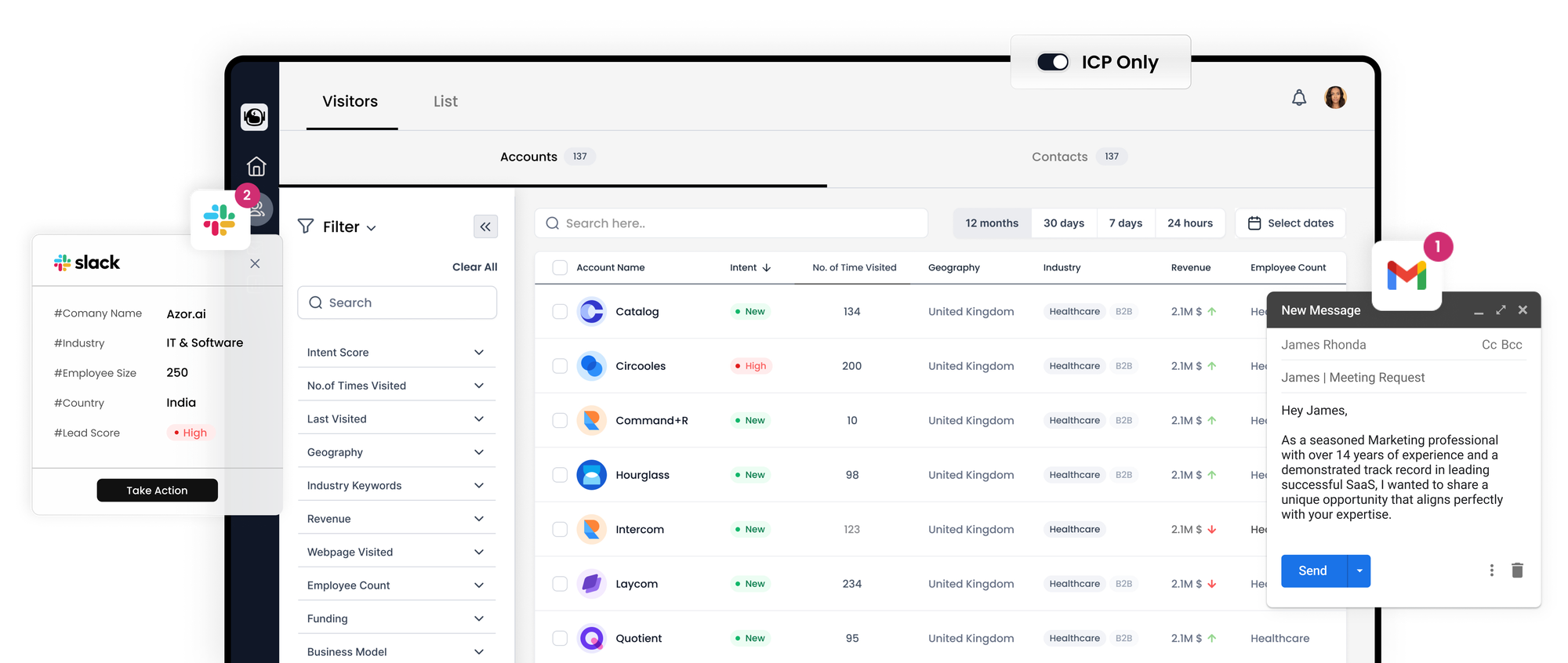What constitutes B2B lead generation? Here are 15 strategies for sustained growth

The realm of sales continuously buzzes about the concept of lead generation. This focus is less about its popularity and more about the elusive nature of finding a consistent formula.
Lead generation remains the enigmatic element of commerce that may elude complete comprehension indefinitely. While there exists an abundance of effective tactics for nurturing leads and executing sales strategies once leads are secured, even premier firms face challenges in the initial phase of lead acquisition.
While a definitive, one-size-fits-all methodology for lead generation might be unattainable, there are tested approaches applicable to the 2022 landscape. In this discussion, we present 15 B2B lead generation tactics that are ready for immediate application.
B2B lead generation may not be straightforward, yet this doesn't preclude the simplification of the process. Let us delve into the details.
Understanding B2B Lead Generation
B2B lead generation involves pinpointing the perfect prospective clients for your offerings and compelling them to make a purchase. To draw the interest of this specific demographic and steer potential clients into the sales pipeline, sales and marketing brigades deploy an array of lead generation techniques. The capacity to incite interest from the correct entities is paramount, placing B2B lead generation as an essential preliminary move.
Contrary to the common association of lead generation with a firm's promotional exertions, it transcends beyond mere paid advertising avenues. Companies often employ a blend of:
- Social media engagement
- Email campaigns
- Content dissemination
- Marketing through events
- Pay-per-click campaigns
- Telemarketing
- Website enhancement

The Nature of B2B Leads
B2B leads encompass individuals, groups, or entities with the potential to convert into clientele for B2B goods or services. These leads typically represent other businesses, as opposed to the individual consumers of B2C transactions. Nevertheless, on occasion, specific individuals and autonomous small enterprises may also act as B2B purchasers.
Procuring B2B sales leads may not be more difficult than obtaining B2C leads, yet their qualification and conversion often present greater complexity. While B2C leads invariably involve individual consumers, B2B leads can present as enigmas. Conventional methods for B2B lead generation frequently culminate in acquiring generic contact details, and as a common grievance, communications directed to a generic info@company.com seldom receive a reply.
Sales teams can only capitalize on B2B leads that correspond with an identifiable contact. Hence, merely generating leads is insufficient — what is required are qualified leads from credible origins.
Defining Marketing Qualified Leads
Marketing qualified leads (MQLs) are prospective leads deemed by marketing professionals as having a propensity to make a purchase, based on essential targeting criteria. Although they might not be immediate buyers, their actions, such as subscribing or downloading exclusive content, signify interest in the company.
MQLs, as passive or outbound leads, ought to be gently propelled through the lead funnel for nurturing, assessing their preparedness for direct sales engagement.
Identifying Sales Qualified Leads
A sales qualified lead (SQL) is an active or inbound lead that has initiated interaction with your business, indicating a direct interest in your product or service. This engagement could take the form of a demo request, an inquiry to the sales department, or a specific query about a product or service.
These leads are crucial for B2B lead generation and warrant prompt follow-up. Prioritizing leads that have proactively reached out to your company can accelerate them through your sales process. By treating SQLs with precedence, you can potentially elevate your sales outcomes.
The Significance of B2B Lead Generation
B2B lead generation is a cornerstone for sales and marketing teams, and it's vital to the core operations of a business. The absence of lead generation equates to a lack of prospects funneling through the sales pipeline, resulting in no conversions, no clientele, and the inevitable cessation of business activities.
Functioning as the lifeblood of an enterprise, B2B lead generation furnishes essential data to marketing representatives, sales personnel, and the critical, often unseen sales development representatives (SDRs). A robust lead generation strategy is instrumental for a business to:
- Pinpoint the perfect customer profiles
- Inform and direct content creation efforts
- Elevate brand recognition and market presence
- Foster robust marketing methodologies and strategies
- Uncover an expanded market potential
- Secure accurate and current contact information for prospects
- Boost the likelihood of prospect-to-customer conversions
- Refine the rhythm of sales interactions
- Enhance the movement through the sales pipeline
- Amplify revenue streams
The B2B Lead Generation Methodology
The initiation of lead generation is deeply rooted in marketing channels that enable potential audiences to discover and interact with your business. These channels are categorized into inbound and outbound marketing.
Inbound marketing channels attract leads that come to you, typically via avenues such as social media, online advertisements, or search engine results. These inbound prospects often translate into shorter sales cycles and exhibit higher conversion rates.
Conversely, outbound marketing efforts reach out to leads through mechanisms like cold calling, emailing, or social media scouting. These leads typically necessitate a more extensive nurturing process and are characterized by lengthier sales cycles.
To demystify the complex puzzle of generating B2B leads, we’ve distilled the approach into a three-step process.
Step 1: Identifying Your Ideal Customer
At the core of finding sales leads is the task of determining the specific prospect you wish to engage. Begin by sculpting a buyer persona that epitomizes your ideal customer for your product or service. Define their industry, role, preferred information sources, and the challenges they face that your solution can address.
For a comprehensive buyer persona, consider these facets:
- Company demographics such as size, location, and structure
- Job titles and levels of decision-making authority
- Objectives and goals
- Challenges and pain points
- Obstacles to engaging in business
- Criteria for making purchases
Multiple personas may be necessary, particularly if your products or services cater to varied buyers. Once you have defined your ideal buyer profiles, you can tailor content specifically crafted for each segment.
Step 2: Choosing a Strategy
With a lucid understanding of your ideal customer, the next phase involves strategizing on how to connect with the real-world counterparts of these personas. Since B2B sales leads do not adhere to a universal approach, you will select from an assortment of tools and strategies. Options range from SEO and content marketing to paid advertising, cold outreach, community engagement, or social media campaigns.
You might employ landing page builders for swift web page creation to gather leads, directly integrating their data into your CRM system. The market is ripe with sales enablement and lead generation software, providing resources for email discovery, telemarketing, and sales engagement. Center your strategies around the personas you’ve detailed, continuously refining and adjusting as needed.
Step 3: Qualifying and Prospecting
When engaging with leads, assessing their purchase likelihood is critical. This is discerned by understanding the lead's stage in their purchase journey—awareness, consideration, or decision.
In the awareness stage, a prospect acknowledges their problem and begins seeking information, possibly encountering your brand for the first time. As they move to the consideration phase, they have a defined understanding of their issue and potential solutions, vetting possible products or services without being ready to commit. Finally, in the decision phase, the prospect is concluding their research and preparing to make a purchase, likely engaging with suppliers and organizing product demos.
Tailor your approach based on the lead's stage in their journey. While targeted content might resonate with those in the awareness phase, product demos or trials are better suited for those nearing a decision.
Should your lead funnel become overwhelmingly full (a welcome challenge), prioritize by assigning values to each lead, focusing on those with the highest potential for conversion.
B2B Lead Generation Strategies and Techniques
Gaining MQLs and SQLs is essential, but they don't spontaneously materialize. Traditional tactics like door-to-door or cold calling are options, yet 2022 offers more sophisticated methods to identify prospects efficiently. We detail 15 dynamic B2B lead generation strategies and tools that could substantially enhance your sales team's performance.
1. Deploy Superior Content Campaigns
To surpass competitors in attracting outbound leads, your content's search relevance must be superior. Ranking first for niche terms is fruitless if your audience prioritizes broader, more competitive terms. Focus on creating optimized content for these sought-after categories. Regularly monitor engagement and iterate your strategy for continuous improvement.
2. Conduct A/B Testing
Perfection isn't a requirement on your first marketing attempt. Utilize A/B testing to fine-tune your webpages and marketing creatives, understanding that even minor changes can significantly affect engagement and, subsequently, lead generation.
3. Amplify Buyer Reviews
Buyer reviews are gold in B2B lead generation. A strong cache of positive reviews can substantiate your credibility and attract prospects, making it essential to incorporate review solicitation into your sales cycle.
4. Utilize Survey Feedback
While surveys are typically associated with customer satisfaction, they can also uncover areas to improve lead engagement, like enhancing communication channels to prevent leads from feeling neglected.
5. Highlight Case Studies
Case studies are a potent tool in B2B marketing, providing hard evidence that can appeal to buyers who value data-driven decisions. Showcase them prominently to leverage their persuasive power.
6. Optimize Your Landing Pages
Engage visitors quickly with interactive elements on your landing pages. Implement contact pop-up boxes or other interactive content to capture attention—and potentially lead information—effectively.
7. Personalize Content for Lead Personas
In the era of ABM, personalization is key. Tailor your website and content to resonate with individual leads or segments, even adjusting based on geographical data obtained from IP addresses.
8. Harness Social Selling
Leverage social media not just for content dissemination but also for engaging with potential B2B customers on platforms like LinkedIn, Twitter, Instagram, and Facebook.
9. Venture into Video Marketing
With YouTube's stature as a top search engine, creating even simple video content can significantly impact lead generation and provide a competitive edge.
10. Sharpen SEO Tactics
Beyond long-form content, apply SEO strategies across all company content to enhance visibility and lead capture.
11. Incentivize Subscriptions
To increase subscriptions, offer compelling incentives that could range from free consultations to extended product demos, aligning with B2B marketing strategies.
12. Prioritize Mobile Optimization
With a high percentage of consumers relying on mobile-friendly sites, ensure your content is optimized for mobile to improve user experience and lead capture.
13. Request Referrals
Capitalize on client relationships to gain referrals. A satisfied customer's recommendation is a powerful lead generator and often results in high-value prospects.
14. Collaborate with Industry Experts
Incorporate expert opinions and endorsements into your marketing materials to add credibility and improve your findability amongst target audiences.
15. Schedule Lead Generation Efforts
Recognize optimal times for lead generation activities, allowing your sales team to concentrate efforts during peak engagement periods and streamline their workflow.
Each of these strategies requires a nuanced approach and continuous refinement. With a blend of traditional and innovative tactics, align your efforts with the evolving landscape of B2B lead generation.
